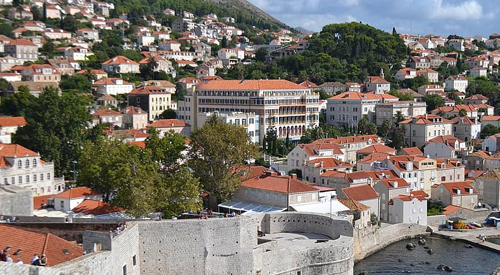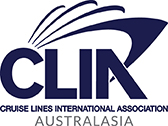The cruise industry has always been a leader in responsible tourism, including its demonstrated commitment to environmental protection, being stewards of the places we visit, providing rewarding career opportunities and above all, to the health and safety of guests and crew.
CLIA’s Global Maritime Policy and Government Affairs Teams coordinate the collaborative work of CLIA Cruise Lines on key maritime policy and legislative matters that impact the cruise industry, engaging with professionals across the maritime sector as well as international, national and local governmental bodies and non-governmental organisations. CLIA leads efforts to educate policymakers and develop policies and practices, advocating for a sustainable cruise industry environment.
Destination Stewardship
One of the key ingredients for responsible tourism is destination stewardship. We partner with city authorities, ports, and other organisations on sustainable tourism initiatives to help preserve the integrity, cultural heritage, and beauty of the world’s most treasured destinations. We share a common vision to capture the social and economic benefits of tourism for residents while safeguarding the long-term sustainability of the cruise destination for future generations.
Our experience of working with a variety of cruise destinations informs us that each has its own unique combination of factors. At CLIA we partner with many respected third parties and industry bodies such as the Global Sustainable Tourism Council (GSTC), that can help port cities analyse how to manage tourism flows and map out a road map for a sustainable future.
Randy Durband, CEO of the Global Sustainable Tourism Council (GSTC) offers an overview of the GSTC approach towards destination assessments and talks about the GSTC assessment of the city of Dubrovnik, published in July 2020. CLIA supported the GSTC assessment as part of its Memorandum of Understanding with Dubrovnik signed in July 2019 to work together to preserve and protect the cultural heritage of Dubrovnik through responsible tourism management, and to help establish the city as a model of sustainable tourism in the Adriatic region and beyond.

Dubrovnik as a model for responsible tourism
Maria Deligianni, Regional Representative for Eastern Mediterranean, Cruise Lines International Association
Featuring UNESCO-designated natural and historic sites, the city of Dubrovnik is world-renowned for the richness of its historical, architectural and cultural experiences. As tourism to Dubrovnik continued to grow in recent years, the city found itself at crossroads, and needing to decide which path to choose. City leaders wanted to capture the social and economic benefits of tourism for residents while safeguarding the long-term sustainability of the city for the good of future generations.
Dubrovnik's response to this modern-day dilemma offers a model for cities on how to introduce responsible tourism principles into their planning processes.
Dubrovnik Mayor Mato Frankovic and the municipality leadership team began by posing two questions. What are the impacts of tourism on the city's natural and cultural attractions? How well is the city managing these impacts to protect the integrty of its resources for its residents and future generations to enjoy? To help find out the answers, the city commissioned the Global Sustainable Tourism Council (GSTC) to assess Dubrovnik's sustainability status, using the global criteria for sustainable destinations. CLIA funded the GSTC assessment as part of CLIA's cooperation with the City of Dubrovnik.
The findings were revealed in June in Dubrovnik, and the results are telling. Particularly noteworthy was the city's "impressive" score for "destination management organisation" which the report indicates "a well-functioning model of public-private sector collaboration." The report also concludes that "collaboration and innovation are natural strengths of the city."
The praise comes as no surprise to those of us in the cruise industry who have enjoyed a constructive dialogue with the Dubrovnik municipality for some years. We have invested time to listen to each other, to learn, and ultimately to work together to find solutions to the issues raised by residents and businesses.
Whilst most visitors travel to Dubrovnik by air, the city is a popular cruise destination. To help the city manage its visitor flow, the cruise industry wanted to play a leadership role to set an example.
As a result, last July, Cruise Lines International Association (CLIA) signed a Memorandum of Understanding with the City of Dubrovnik. During the 2018 and 2019 season, CLIA cruise lines staggered arrival and departure schedules to manage visitor flow and help relieve the congestion at the Old Town's Pile Gate. Cruise lines have also been working with the local community to develop new tours to include sites outside the Old Town, as well as supporting the Mayor's 'Respect the City' programme educating tourists on respectful behaviour.
All those involved in brokering the agreement believed that it was possible to maximise the economic and cultural benefits of tourism in Dubrovnik through successful tourism management and were willing to work together towards that vision. As Mayor Mato Frankovic puts it in the GSTC report: "The key to the success of each destination is management."
As we reflect on the future for responsible travel, the example of Dubrovnik demonstrates the power of collaboration between public and private sector and local communities. Collaboration is the key, and it is a powerful tool that is often untapped. As the world learns more about our current global health crises, society is recognising the importance of collaboration to address issues that impact us all. We need to work together to identify common solutions.
The result offers an exmple of how popular destinations can preserve the unique culture and heritage that draw thousands of visitors each year. When we share a common vision, put aside commercial competition, and develop an open, frank dialogue with our partners, together, we can find the right path.

